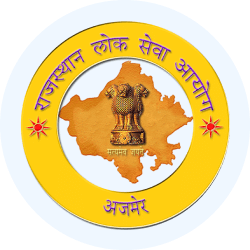RPSC RAS (Rajasthan) Exam > RPSC RAS (Rajasthan) Notes > RPSC Preparation: All subjects > Rajasthan - Soils
Rajasthan - Soils | RPSC Preparation: All subjects - RPSC RAS (Rajasthan) PDF Download
Introduction
- Soil is a loose, inorganic material essential for life on Earth, providing nourishment for vegetation and agricultural growth. Plants and vegetation also absorb water through soil. This article explores soil and the traditional classifications of soil in Rajasthan.
- According to this system, the different types of soil found in Rajasthan are classified into the following categories: desert soil, dunes and associated soil, brown soil, sierozems, red loams, hill soils (lithosols), saline-sodic soils (solanchaks), alluvial soil, and black soil.
Different Types of Soils in Rajasthan
Desert Soil
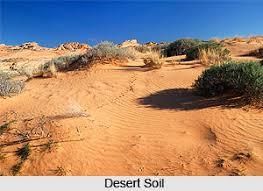
- This type of soil in Rajasthan covers large areas such as Churu, Sri Ganganagar, Jalore, Jodhpur, Barmer, and Hanumangarh.
- It is primarily found in regions with less than 400 mm of annual rainfall.
- The percentage of calcium carbonate in the soil varies.
- The soil contains a high percentage of salt.
- It is pale brown in color.
- The texture ranges from sandy to sandy loam.
- The surface horizon is non-calcareous, while the B horizon is slightly calcareous.
- Calcium carbonate mainly appears as kankar nodules in the soil.
- In areas such as Nagaur, Sikar, and Jhunjhunu, where rainfall is around 40 to 50 cm, the soil is primarily non-calcareous.
- This specific soil type in Rajasthan is generally darker in color.
- Nitrogen is crucial for the growth of plants and vegetation.
- The nitrogen content in this soil is low, ranging from approximately 0.2 to 0.7%.
- The nitrogen deficit is offset by the presence of nitrate in the soil.
- The soil's phosphate and nitrate content ensures high fertility.
- The fertility of this desert soil supports high levels of agricultural production.
- This soil in Rajasthan typically supports Kharif crops.
Dunes And Associated Soils of Rajasthan

- The texture of this soil ranges from fine loamy sand to coarse sand.
- It may be calcareous or non-calcareous.
- The soil is light yellowish brown in color.
- Areas with this soil are often considered favorable for cultivation.
- The soil is impacted by wind storms in the region, making agriculture more common during the monsoon season.
- Bajra is the primary crop grown in this region.
- This soil supports Kharif crops.
Brown Soil

- This type of soil in Rajasthan is primarily found in areas where the Banas River flows.
- The soil color varies from greyish brown to yellowish brown.
- It contains abundant amounts of calcium salts.
- The soil is generally moderately well-drained.
- The saline water in the area contributes to high salt content in the soil.
- This soil supports Kharif crops, typically with rainfall around 50 to 75 cm, but no rainfall is required to support Kharif crops.
- It also supports Rabi crops when irrigation is available.
- This soil is found in areas such as Udaipur, Chittorgarh, Sawai Madhopur, Bundi, and Tonk.
Question for Rajasthan - SoilsTry yourself: Which type of soil in Rajasthan is pale brown in color, has a high percentage of salt, and supports high levels of agricultural production?View Solution
Sierozems
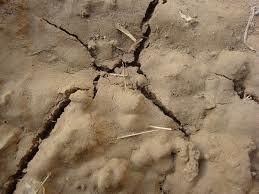
- This type of soil in Rajasthan is found in areas with discontinuous hills and many wind gaps.
- The soil is primarily yellowish brown in color.
- The texture ranges from sandy loam to sandy clay loam.
- It has a weak structure.
- The soil is moderately calcareous.
- Lime is present in the soil at a depth of 100-150 cm.
- This soil is found in regions with 50-75 cm of rainfall.
- It supports Kharif crops such as jowar, bajra, pulses, and sesame.
- It also supports Rabi crops like wheat.
Red loam
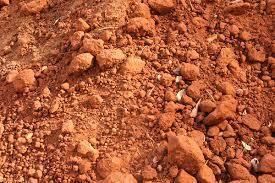
- This red soil is primarily found in the southern part of Rajasthan, including areas like Dungarpur, Banswara, Udaipur, and Chittorgarh.
- The texture of this soil ranges from sandy to sandy loam.
- It has a granular or crumb structure and is well-drained.
- The soil depth varies significantly.
- It is shallow, sandy, or gravelly on hilltops.
- In valleys, it is often deep reddish loam.
- This soil is found in areas with annual rainfall ranging from a minimum of 70 cm to a maximum of 100 cm.
- It supports the cultivation of Kharif crops such as maize and chilies.
- Barley, wheat, and rapeseed are grown in this soil during the Rabi season.
- The soil contains an abundant amount of iron oxide.
- Calcium salts are not present in this soil.
Alluvial and Black Soil Of Rajasthan
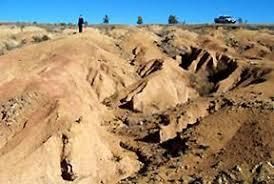
- Scholars define alluvial soil as unique because it forms from alluvium brought and collected by different rivers.
- The alluvial soil in various regions differs significantly due to the varying sources of alluvium from different rivers.
- For instance, the soil deposited by the Ghaggar River and the floodplain areas of the Sri Ganganagar and Hanumangarh regions of Rajasthan are different.
- This soil is yellowish brown and has a texture ranging from loam to silty loam.
- It has a calcareous nature and generally a rocky structure.
- Stratification is a common feature of this soil variety.
- Often, this soil intermixes with sandy material present in the region.
- This soil extends across the western, eastern, and southeastern plains of Rajasthan.
- Alluvial soil in areas such as Jaipur, Bharatpur, Kota, Baran, Ajmer, Bundi, and Alwar has been deposited by various rivers.
- Due to differences in deposition times, this soil is categorized into old alluvium and new alluvium.
- Old alluvial soil is formed from older river deposits and is mainly found in Ajmer, Udaipur, Chittorgarh, and Tonk.
- Its color ranges from greyish brown to yellowish brown, with a texture of sandy loam to clay loam.
- New alluvial soil is formed from recurring river deposits and is found in Dausa, Jaipur, and Alwar.
- It is yellowish brown to brown, weakly structured, and calcareous, with noticeable lime presence.
- Black soils in areas like Kota, Bundi, Jhalawar, and the Baran region of Rajasthan also fall under the alluvial soil category.
- This soil contains lime concretions or lime-encrusted gravels, leading to variations in soil depth.
- It originates from the Deccan Trap and Vindhyas and has a texture of clay loam to clay.
- It is mostly slowly permeable and tends to develop cracks up to 50 cm deep in hot and dry seasons.
- It is primarily non-saline and non-alkaline.
- Due to its medium to dark black color, this soil is sometimes classified as black soil.
- This category of alluvial soil ensures high productivity and supports good agricultural practices in Rajasthan.
- It typically supports the production of crops like wheat, cotton, tobacco, and rice.
Hill Soils Of Rajasthan
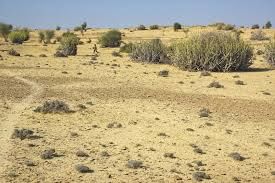
- This type of soil in Rajasthan is also called Lithosols.
- It is found at the foothills in the hilly regions of Rajasthan.
- This soil is present in the Ajmer, Bhilwara, and Chittorgarh regions.
- The texture of this soil ranges from sandy to clay loam.
- It is well-drained.
- The soil color varies, with tones ranging from reddish to yellowish red and red to yellowish brown.
- Due to its shallow nature, this soil supports limited agriculture compared to other soil types in Rajasthan.
- This soil is also prone to erosion due to the presence of water.
Saline-Sodic soils
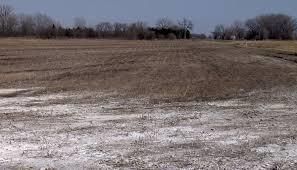
- This type of soil in Rajasthan is primarily found in areas with natural depressions, such as Sambhar, Barmer, the Rann of Jalore, Didwana, and the Pachpadra region.
- Saline soils are also common in the floodplain areas of the Ghaggar River and parts of the Luni Basin.
- Saline or salt-affected soils are also present in fragments across Rajasthan's arid and semi-arid regions.
- The color of this soil ranges from dark grey to pale brown.
- This soil does not support vegetation due to a lack of water and a high degree of salinity.
Question for Rajasthan - SoilsTry yourself: Which type of soil in Rajasthan is primarily found in areas with natural depressions and high salinity levels?View Solution
Conclusion
Soils in the region of Rajasthan have been significantly influenced by a combination of factors such as alterations in topography, drainage patterns, geological elements, and evolving land use practices. The diverse soils found in Rajasthan play distinctive roles in shaping the state's characteristics. These include desert soil, alluvial soil, black soil, and several others.
The document Rajasthan - Soils | RPSC Preparation: All subjects - RPSC RAS (Rajasthan) is a part of the RPSC RAS (Rajasthan) Course RPSC Preparation: All subjects.
All you need of RPSC RAS (Rajasthan) at this link: RPSC RAS (Rajasthan)
|
152 videos|95 docs
|
FAQs on Rajasthan - Soils - RPSC Preparation: All subjects - RPSC RAS (Rajasthan)
| 1. What are the different types of soils found in Rajasthan? |  |
Ans. Rajasthan has various types of soils, including sandy soil, clay soil, loamy soil, and saline soil.
| 2. Which type of soil is most commonly found in Rajasthan? |  |
Ans. Sandy soil is the most common type of soil found in Rajasthan, covering a significant portion of the state.
| 3. How does the type of soil in Rajasthan affect agriculture in the region? |  |
Ans. The different types of soils in Rajasthan have varying levels of fertility and drainage, which impact the types of crops that can be grown in different areas.
| 4. What are the characteristics of saline soil in Rajasthan? |  |
Ans. Saline soil in Rajasthan has a high concentration of salt, making it unsuitable for most crops without proper management techniques such as irrigation and soil amendments.
| 5. How can farmers in Rajasthan improve the fertility of their soils for agriculture? |  |
Ans. Farmers in Rajasthan can improve soil fertility by using organic matter, crop rotation, and appropriate irrigation methods to enhance the productivity of their land.
Related Searches



